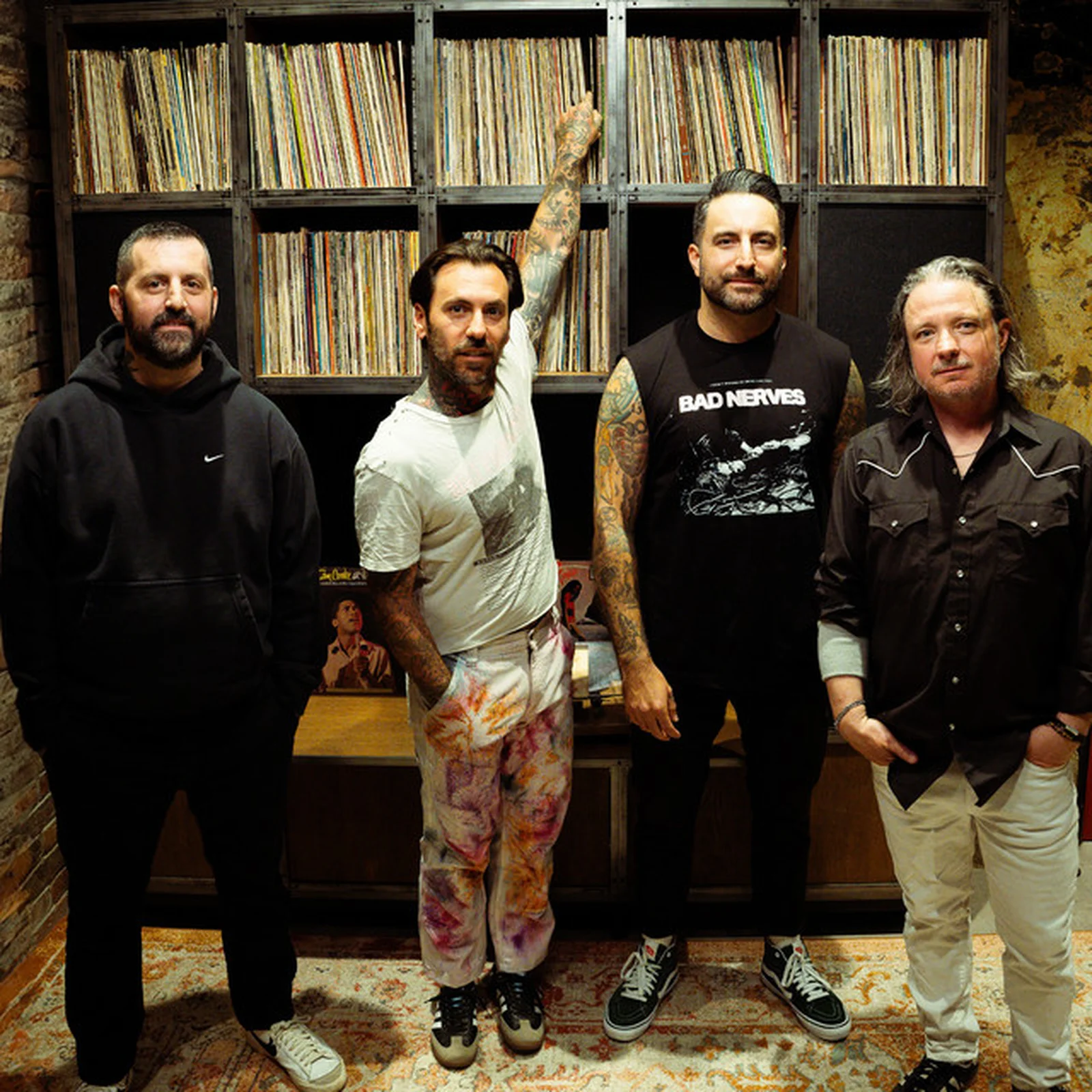Bayside is an American rock band that has carved a durable and resonant niche within the landscape of alternative music. For over two decades, their distinct fusion of punk energy, intricate guitar work, and emotionally charged lyrics has cultivated a dedicated global following. Characterized by a sound that navigates the contours of emo, pop-punk, and alternative rock, Bayside has maintained a career defined by resilience, consistency, and a profound connection with its audience. Their journey from the neighborhoods of Queens, New York, to international stages is a testament to their artistic integrity and staying power, making their catalog a cornerstone of the genre and a frequent feature at events like Emo Night Pittsburgh.
Formation and Early Era
The band’s foundational years were marked by the ambition and raw energy typical of the early 2000s rock scene, quickly establishing them as a promising act with a unique melodic and lyrical depth.
Origins and Formation
Bayside was formed in the winter of 2000 in the Bayside neighborhood of Queens, New York City. The initial lineup was spearheaded by vocalist and rhythm guitarist Anthony Raneri. The band’s name was chosen incidentally; while on their way to a New Found Glory show to pass along a demo, they passed the Bayside train station and decided to write the name on the disc. The moniker stuck, and the group began to build a local following. After a series of lineup adjustments, the core of the band began to solidify, driven by Raneri’s introspective songwriting and impassioned vocal delivery. By 2003, the lineup stabilized with Jack O’Shea on lead guitar, Andrew Elderbaum on bass, and Jim Mitchell on drums, creating the chemistry that would define their early work.
Early Discography
The band’s first official release was a five-song demo, which led to their signing with Dying Wish Records. In 2001, they released the Long Stories Short EP, a collection of tracks that showcased their burgeoning talent for crafting catchy, yet melancholic, punk rock anthems. This was followed by a split EP with the band Name Taken in 2003. These early releases helped Bayside gain traction, leading to a pivotal signing with the influential independent label Victory Records. In January 2004, Bayside released their debut full-length album, Sirens and Condolences. Produced by J. Robbins, the album was a raw and brooding introduction, praised for its lyrical honesty and sophisticated guitar interplay. It laid the groundwork for their signature sound and began to distinguish them within the crowded pop-punk and emo scenes.
The Mainstream Breakthrough
The mid-200s proved to be a period of immense growth and profound challenge for Bayside, as they experienced their first taste of mainstream recognition while enduring a life-altering tragedy.
Pivotal Album(s) and Lineup Changes
Following their debut, the band saw further lineup changes, with Nick Ghanbarian taking over on bass and John “Beatz” Holohan on drums. This lineup would record Bayside’s self-titled sophomore album, released in August 2005. Bayside was a significant step forward, featuring a more polished production and a collection of songs, including “Devotion and Desire,” that would become fan favorites. The album broke into the Billboard 200 chart, signaling their arrival to a wider audience. However, the band’s ascent was met with tragedy. On October 31, 2005, while on tour, the band’s van hit a patch of ice and flipped over. The accident resulted in the death of drummer John Holohan and left bassist Nick Ghanbarian severely injured. In the wake of this devastating event, the band released the Acoustic EP in 2006, a stripped-down collection of songs that included a moving tribute to Holohan titled “Winter.” The EP was a raw, emotional statement of grief and resilience. With the addition of new drummer Chris Guglielmo, the lineup of Raneri, O’Shea, Ghanbarian, and Guglielmo has remained intact ever since, becoming the definitive and longest-standing iteration of the band.
Achieving Critical and Commercial Success
The period following the accident was crucial in defining the band’s legacy. Rather than dissolving, Bayside channeled their experience into their music, returning in 2007 with The Walking Wounded. The album was a powerful and defiant statement of survival, resonating deeply with critics and fans. It peaked at number 75 on the Billboard 200, their highest chart position to date, and was widely regarded as both a creative and commercial triumph. The album’s success solidified their place in the alternative rock scene and demonstrated their ability to transform adversity into powerful art. This era cemented the band’s reputation for perseverance and deepened the bond with their audience, who saw their own struggles reflected in the band’s honest and unflinching music.
Musical Evolution and Key Events
As Bayside moved beyond their initial breakthrough, they continued to evolve their sound, exploring new sonic territories while navigating the changing music industry landscape.
Mid-career Albums and Sonic Shifts
In 2008, Bayside released their fourth studio album, Shudder, which continued their commercial success and saw them experimenting with a slightly more straightforward rock sound. It was their final album with Victory Records. Fulfilling their contract, the band sought a new home and signed with Wind-up Records for their 2011 release, Killing Time. Produced by the legendary Gil Norton (Pixies, Foo Fighters), the album was a significant sonic evolution. It featured a more expansive, layered sound and some of the band’s most ambitious songwriting, further distancing them from the simpler confines of pop-punk. Following this, the band took a creative detour, self-releasing Covers Volume #1 in 2012, which saw them interpret songs by artists like Billy Joel and The Ronettes. In 2013, they signed with Hopeless Records, a partnership that continues to this day, and released Cult in 2014. The album was a return to form for many, blending the raw energy of their early work with the refined musicianship of their later albums, and it became their highest-charting record, peaking at number 24 on the Billboard 200.
Hiatus, Reunions, or Significant Member Departures
Unlike many of their contemporaries, Bayside has not experienced any official hiatuses or reunions. Their career has been one of remarkable consistency and stability, particularly since the lineup was solidified in 2006. There have been no significant member departures in over fifteen years, a rarity in the music world. This stability has allowed them to continuously write, record, and tour, building a reliable and ever-present connection with their fanbase. Instead of breaking up, they have consistently delivered new music every two to three years, a work ethic that has kept them relevant and active in a scene that has seen many other bands come and go.
Modern Era
In their third decade, Bayside has embraced their status as veterans of the scene, continuing to release vital new music while celebrating their extensive history.
Recent Albums and Contemporary Activity
Bayside’s modern era with Hopeless Records has been prolific. They released Vacancy in 2016, an album written in the wake of Raneri’s divorce, which carried a palpable sense of isolation and introspection. This was followed by Acoustic Volume 2 in 2018, continuing their tradition of reinterpreting their own catalog in a new light. In 2019, they released their eighth studio album, Interrobang, a record that was noted for its heavier and more aggressive sound, pushing their musical boundaries further than ever before. To celebrate their 20th anniversary in 2020, the band planned an extensive tour, which was unfortunately canceled due to the global pandemic. Undeterred, they continued to create, releasing Acoustic Volume 3 that same year. In 2022 and 2023, they released a pair of EPs, The Red EP and The Blue EP, before compiling them into their ninth studio album, There Are Worse Things Than Being Alive, released in 2024. The band continues to tour extensively, proving their enduring appeal and artistic vitality.
Cultural Impact and Connection to the Scene
Bayside’s longevity and consistent output have made them an influential and beloved fixture in the alternative music world, with a legacy that continues to resonate.
Influence on Their Primary Genres
Within the realms of emo and alternative rock, Bayside’s influence is rooted in their musical sophistication and lyrical substance. While many of their peers relied on simpler song structures, Bayside stood out for their complex guitar riffs, intricate song arrangements, and Raneri’s verbose, literary-style lyrics. This combination raised the bar for musicianship within the scene and inspired a generation of bands to look beyond basic power chords and simplistic lyrical themes. Their ability to write songs that are both technically impressive and emotionally resonant has ensured their music remains a benchmark for quality and authenticity in the genre.
Relevance in Nostalgia Events like Emo Night Pittsburgh
The enduring power of Bayside’s music is on full display at events celebrating the peak of the emo and pop-punk movements. At a Pittsburgh Emo Night, for example, hearing a classic Bayside track like “Duality” or “Sick, Sick, Sick” is a quintessential experience. These songs are not just relics of a bygone era; they are timeless anthems of heartache, resilience, and identity that continue to connect with new listeners. For those who grew up with the band, their music is a powerful touchstone to their formative years. For newer fans, it represents the pinnacle of the genre’s artistic potential. The continued popularity of Bayside at events like Emo Night Pittsburgh underscores their status as an essential and beloved pillar of the scene, a band whose music has not faded with time but has instead become a celebrated part of the culture.
Frequently Asked Questions About Bayside
- What genre is Bayside?
- Bayside is most often classified within the emo, alternative rock, and pop-punk genres. Their sound is characterized by melodic vocals, intricate and technical guitar work, and emotionally charged, introspective lyrics.
- Who are the current members of Bayside?
- The current and long-standing lineup of Bayside consists of Anthony Raneri (lead vocals, rhythm guitar), Jack O’Shea (lead guitar), Nick Ghanbarian (bass guitar), and Chris Guglielmo (drums).
- How did Bayside get their name?
- The band got its name from the Bayside train station in their home borough of Queens, New York. They were on their way to give a demo to another band and needed a name to write on the CD, and the name stuck.
- What is Bayside’s most commercially successful album?
- Bayside’s 2014 album, Cult, is their highest-charting album to date, reaching number 24 on the Billboard 200 chart.
- Did Bayside ever break up?
- No, Bayside has never officially broken up or gone on hiatus. Despite facing a significant tragedy in 2005, the band has maintained a consistent career of recording and touring for over two decades.
- What happened to Bayside’s original drummer?
- Drummer John “Beatz” Holohan was tragically killed in a van accident on October 31, 2005, while the band was on tour. The incident also resulted in serious injuries to bassist Nick Ghanbarian.

